October 1, 2022
Despite Eased Restrictions.. Pandemic Maintained New Social & Preventive Habits for More than Two Years
Dubai- United Arab Emirates, October 2022: People around the world have passed through exceptional circumstances in the wake of COVID-19 outbreak which hit the globe hard at the beginning of 2020. Rapid changes took place, with no looming signs of when life will be back to its previous form prior restrictions, border closures and social distancing.
Under unprecedented international coordination, that hasn’t been seen over the past decades, a number of systematic and simultaneous actions were taken. While the number of COVID-19 patients soared around the world, comprehensive and unconventional efforts have been made in an attempt to curb the spread of the pandemic pushed by governments’ sense of responsibility, and in fulfilment of recommendations of the World Health Organization (WHO), which declared COVID-19 a rapidly spreading and life-threatening global pandemic.
The unclear and exceptional situation cast a shadow over all aspects of life. Societal perceptions and behaviors changed, and general attitudes towards aspects that remained habitual and stable for long time have been altered. Furthermore, the situation prompted new lifestyles to keep pace with the requirements of the new conditions in the midst of the so-called “The Time of Pandemic”.
Addaera was close to these radical changes it witnessed and was an integral part of. It closely followed up with developments on all levels, immediately initiating public opinion surveys on issues identified as urgent and critical at the time in light of local management of emergency circumstances. This included measuring the general confidence index in government actions against the pandemic, and the efficiency of rapid response to the state of emergency. Later on, Addaera evaluated people’s impressions about food availability, as part of food security during the crisis; in addition to documenting the timeline of all taken procedures in terms of supporting business continuity, establishing field medical facilities and imposing preventive measures.
After two years of the pandemic, fluctuating between hike and drop waves worldwide; and during the stage of gradual recovery, Addaera launched a new public opinion survey to evaluate the tangible repercussions on general lifestyle, and the impact on people’s emotions which were rapidly stuck between concerns, doubts and uncertainty about the future.
Optimistically looking for an imminent end to the pandemic, Addaera conducted “The Social Impact of COVID-19 on Dubai Society” study to identify major aspects related to sudden lifestyle changes, general sentiment and pandemic’s impact on mental health and purchasing power; in addition to the public perception of COVID-19 vaccine, children vaccination, and source and efficiency of relevant information.
…………………………….
The study revealed that the society has acquired new habits that were maintained until the date of conducting this survey despite the lapse of two years after the pandemic; in reflection to the extended change of lifestyle in way or another.
Habits caused by the pandemic
Wearing face masks was the most maintained new habit that people were reluctant to get rid of in spite of eased precautionary measures according to 84.3% of total respondents.
Obviously, habits that emerge in critical situations may take longer time to fade away, as only 19.6% of total respondents declared that they would immediately take masks off if became optional, against 40.5% confirmed they would stick to wearing them regardless their mandatory status, while 39.9% would consider it based on circumstances.
Older participants showed more commitment to face masks compared to youth of 30 years old or below. Between 40.8% and 50.0% of age groups 30 – 60 years old or above stated that they would continue wearing face masks even if ruled optional.
Wearing masks was not the only behavior emanating from the pandemic. 57.8% of respondents were still preferring to spend more time at home as a habit they have been used to since the outbreak, while 55.7% continued to shop online despite the fact that stores were back to work normally.
Also 55.6% seemed to continue avoiding others or crowded places and large-scale events, and 53.6% maintained their habit of food takeout and delivery with less visits to restaurants.
The impact extended to other life aspects, as 45.3% indicated they were still avoiding travel, while 34.8% were still cutting expenditures and increasing savings.
Worry about contracting COVID-19
As the pandemic was on the threshold of its third year, and despite decreasing health risks and eliminating restrictions, concerns over contracting COVID-19 was still considerable among respondents according to responses of 52.2% who affirmed that they were still worried about contracting the disease totally or to some extent.
However, females were more anxious as 69.4% of them expressed their concerns about getting infected compared to 41.0% of males who took part in the survey.
Respondents who stated they were still worried about contracting COVID-19 mentioned some activities they considered to be the main trigger of their concern.
Among 52.2% who expressed their worry, 67.6% related their biggest fear to weddings, 65.5% concerts and sports events, 57.4% malls, 56.8% closed office space and 55.4% dining at a restaurant or at someone else’s house.
Moreover, 54.2% mentioned travel and airports to be their main worry factor. Also, hair salons and barbershops were chosen by 51.8%, gyms by 51.5% and overseas vacations by 50.3%.
Data analysis shows that the main source of COVID-19 risk as perceived by participants varied from one age group to another, reflecting the preferences of visited places according to age.
69.2% of young respondents aged 18-29 years old, pointed that concerts and sports events were a main source of worry; while weddings represented the riskiest activity for 68.8% of respondents aged 30-39 years old, 77.8% of respondents aged 40-50 years old and 69.2% of respondents aged 51-60 years old.
Furthermore, according to 60.0% of respondents aged 61 years old and above, dining at a restaurant or at someone else’s house was the main source of worry.
Lifestyle after the outbreak
The public opinion survey highlighted lifestyle after COVID-19 outbreak, as respondents were asked about how they describe their life at the time of this survey compared to how it was before the pandemic; whether completely changed, or normal and completely similar, or similar to some extent.
Data showed that lives of 82.0% of respondents have changed, with 46.3% of whom confirming complete change, and 35.6% stating that life was similar to some extent.
53.8% of participants described their life, at the time of this survey, to be normal and similar to how it was before COVID-19, either completely normal by 18.2%, or similar to some extent by 35.6%.
It is worth mentioning that the 35.6% is an intersected percentage between those who confirmed and negated the change of life; more specifically the respondents who chose similar to some extent, which implies potential change at the same percentage.
As life became normal among 53.8%, some of the habits acquired due to the pandemic were no longer practiced.
Inquiring about resumed activities by respondents who stated their life was back to normal at the time of this survey, 81.5% clarified that they returned to visit restaurants and attend gatherings, 73.1% resumed visiting friends and relatives, 63.3% started to receive visitors at their houses, 46.5% took overseas trips and 34.4% loosened sanitization measures.
COVID-19 impact on purchasing power
On the other hand, the survey explored the impact of COVID-19 pandemic on the economic status of respondents with regard to their purchasing power and financial difficulties in general. 50.8% confirmed that their purchasing power didn’t change, compared to 31.7% pointed out their purchasing power was affected negatively due to the pandemic.
The negative impact of COVID-19 on the purchasing power was felt mostly by Arab respondents at 47.5%. Also, the most affected by gender were males by 34.2% of total respondents.
By age groups, the most affected were those aged 30-39 years old at 33.8%, and 40-50 years old at 32.1%, indicating respondents in working age, and by employment status, the effect was mostly among the unemployed and not looking for job by 40.0%, part-time employees by 38.9% and full-time employees by 32.2%.
Causes of negative impact on purchasing power
Among 31.7% who confirmed that their purchasing power was affected negatively after the pandemic, 52.5% referred the reason to the less income due to salary cuts, 51.5% to the fear of future and uncertainty, 35.3% to the less income due to job loss and/or business closure.
Categorized by gender, 53.7% of males attributed the main reason to the less income due to salary cuts, while 52.9% of female respondents referred to the fear of future and uncertainty.
Data by nationality shows that purchasing power of 62.1% of Arabs were affected because of the less income and salary cuts, meanwhile the fear of future and uncertainty was mentioned by 62.9% of Asians and 45.5% of Emiratis.
Respondents from North/South Americas and Europe related the negative impact on their purchasing power to the less income due to job loss and/or business closure by 56.3%, and the less income due to salary cuts by 43.8%.
There were some activities that were respectively affected by the declined purchasing power among those respondents who made 31.7% and counted 204 out of 644 total participants.
Among them, 81.4% stated that travel and vacations were the activities affected most by their declined purchasing power.
Other affected activities included shopping by 64.2%, dining out by 61.8%; while respondents had to cut household expenses and grocery by 56.9%, and housing costs and rent by 44.1%. Additionally, 32.4% faced difficulties sustaining their families or had to send them back to home country, and 30.9% cost of school tuition.
Surprisingly, 17.5% of total respondents stated that their purchasing power was affected positively due to COVID-19 pandemic, a small percentage created by increased saving opportunities and less expenditure during the outbreak and lockdown. The positive impact was felt mostly by 22.2% of Emiratis and 20.4% of Asians.
Causes of positive impact on purchasing power
Out of those 17.5%, there were 60.2% who referred the reason of improved purchasing power to the limited scope of travel and vacations, 54.0% to the reduced dining out, 50.4% to the less outdoor shopping and 47.8% the decreased non-essential products and luxury items.
Categorized by gender, out of 13.5% of males, whose purchasing power was affected positively, 58.5% referred to the limited scope of travel and vacations, 54.7% the reduced dinning out, and 50.9% the decreased non-essential products and luxury items.
On the other hand, out of 23.8% of females, whose purchasing power was affected positively, 63.3% referred the reason to the less outdoor shopping, 61.7% the limited scope of travel and vacation, and 53.3% to the reduced dinning out; which reflects the difference between the two genders in interests and spending preferences.
Analysis by nationality shows that a major percentage of respondents referred the reason behind their enhanced purchasing power to the limited scope of travel and vacation, which seems to be in line with the restricted movement associated with the lockdown and difficulties to visit home countries during the pandemic.
This factor was chosen by 64.1% of Asians, 75.0% of Americas/Europe respondents, 100% of non-Arab Africans, while the smallest percentage was recorded among Arabs by 33.3%, and Emiratis 57.1%.
Out of 22.2% of the Emiratis whose purchasing power was affected positively, 78.6% referred the main reason to the decreased non-essential products and luxury items, and 71.4% to the reduced dinning out.
Among 12.3% of Arabs who felt positive impact on their purchasing power, the main reasons were reduced non-essential products, limited scope of travel and vacation, and reduced dining out by 33.3% each.
Pandemic’s impact on mental health
The study shed light on the impact of COVID-19 pandemic on mental health. Results revealed that 50.3% of total respondents did not experience any major change in their mental health due to the outbreak compared to 21.6% whose mental health has improved; while on the other hand, 28.1% stated that they became more stressed.
Feelings of stress was expressed by 34.1% of total female respondents compared to 24.2% of males, and also was the highest at 38.1% among respondents aged 30-39 years old.
Data analysis clarified that negative effect on mental health was associated somehow with declined purchasing power.
59.1% of Emiratis whose purchasing power was affected negatively also indicated that they became more stressed. The same was observed among 51.7% of Arab respondents of this category.
Revealing psychological symptoms, worries and stress about catching the virus was mentioned by 50.7% of total respondents, Isolation and loneliness by 32.0%, increased sense of insecurity by 29.4%, lack of concentration by 26.2%, anger issues by 24.2%, sleeping troubles by 22.3%.
By gender, worries and stress about catching the virus was felt by 62.7% of females and 42.9% of males, isolation and loneliness by 39.7% of females and 27.1% of males, increased sense of insecurity by 33.7% of females and 26.5% of males, lack of concentration by 33.3% of females and 21.7% of males, anger issues by 31.3% females and 19.6% of males, and sleeping troubles by 28.1% of females and 18.6% of males.
Females were obviously more affected by the pandemic as they experienced more negative psychological issues compared to males.
Means of expressing worry
Inquiring about means used by participants to express their concerns and feelings of anxiety, 51.9% of total respondents stated that they didn’t feel worried at all. However, 39.4% clarified that they communicated their feelings of anxiety to their family members and friends.
A small percentage of 8.4% mentioned self-meditation/yoga, a practice that gained ground during the lockdown.
Results show a sharp decline in approaching professional phycological support as only 3.7% of total respondents sought assistance from a psychologist/ psychiatrist, and 3.3% visited a family counselor.
General attitude toward COVID-19 vaccine
On the other hand, the vast majority of survey respondents, 93.9%, confirmed they were vaccinated against COVID-19. However, Arabs made the largest percentage of those who didn’t get the vaccine at 12.3% compared to other nationalities with the highest reaching 7.1% only.
The main reasons behind getting COVID-19 vaccine were to avoid restrictions by 62.3%, save and protect others’ lives by 53.8%, fulfil work requirement by 52.4%, be able to travel abroad by 47.6%, resume a normal/pre-COVID-19 life by 45.7% and trust in vaccine effectiveness by 43.4%.
1.6% were still considering getting the vaccine, and 4.5% didn’t get the vaccine as of the questionnaire date, 34.5% of them referred the reason to the possible side effects of COVID-19 vaccine; moreover, both the confusion caused by multiple COVID-19 vaccines, and being unconcerned about catching the virus by 31.0% each.
Sources of information about vaccine
With regard to the source of information about COVID-19 vaccine, social media and apps appeared to be the main source to 45.5% of respondents.
Broadcast media and print media/TV news, radio, newspapers were mentioned by 45.3% of respondents, local and government authorities by 42.9%, friends & family/word of mouth by 39.6%, healthcare specialists/scientists, doctors and health experts by 38.0% and official websites by 37.7%.
General perceptions of vaccine
The survey highlighted perceptions of COVID-19 vaccine through descriptive statements for respondents to agree or disagree with.
77.2% of total respondents agreed that it is safer to get COVID-19 vaccine than catching the virus. Meanwhile, 71.0% disagreed with the statement that COVID-19 vaccines are deadlier than the virus itself.
65.7% agreed that COVID-19 vaccines are effective at protecting from the virus, while 57.9% didn’t know if COVID-19 vaccine could put pregnant women at greater risk of miscarriage.
Only 5.4% agreed that COVID-19 vaccine could change people’s DNA, and 29.7% agreed that the vaccine could infect someone with the virus.
COVID-19 vaccine for children
With regard to COVID-19 vaccine for children, respondents were asked if they received sufficient information about vaccines for children of 18 years old or less. 67.2% of respondents confirmed that their knowledge was not enough, with 68.9% of males and 64.7% of females.
Among respondents who affirmed receiving sufficient information on COVID-19 vaccines for children of 18 years old or less, 57.3% stated that the source of their information was health care authorities, 27.5% pediatricians/healthcare providers and 24.6% schools.
Meanwhile, 9.9% of respondents confirmed that their child/children had some concerns regarding getting COVID-19 vaccine.
43.8% of them pointed out that their children’s fears mainly included needle aversion, 31.3% referred feelings of discomfort to possible immediate side effects and 25.0% mentioned the possible long-term effects. Moreover, 23.4% stated that their child/children had doubts about its necessity and concerns about its efficacy, while 21.9% overall vaccines safety.
……………………….
Methodology and demographics
The study adopted the quantitative research methodology, as Addaera’s field surveyors made random face-to-face interviews with respondents in different locations across the Emirate of Dubai in the period from 27th of December 2021 to 15th of February 2022, through a survey of 25 questions exploring the research aspects.
91.1% of the study sample were living in Dubai at the survey time. The sample was designed to represent different categories of the society in the Emirate, as total number of respondents reached 644, with 60.9% males and 39.1% females.
Also, respondents were of multiple nationalities, with 59.3% Asians, 18.9% Arabs, 9.8% Emiratis and 9.8% from North/South America and Europe.
_______________________________






